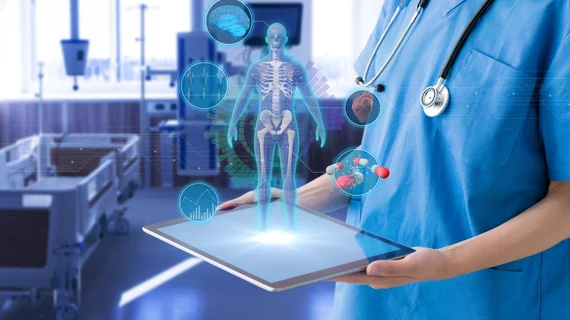Is there a better way to differentiate between type 1 and type 2 myocardial infarctions?
Differentiating between type 1 and type 2 myocardial infarctions (MIs) is incredibly important, but doing so with any level of accuracy still depends on a full clinical evaluation from a cardiologist. Researchers evaluated a variety of potential cardiovascular biomarkers to see if they could help in this area, sharing their findings in JAMA Cardiology.
The study’s authors explored data from more than 5,000 patients who were treated in Switzerland, Spain, Italy, Poland or the Czech Republic. All patients presented at a hospital’s emergency department with acute chest discomfort, and each one underwent a clinical evaluation that included a 12-lead electrocardiogram and standard blood work.
For the sake of this analysis, a type 1 myocardial infarction (T1MI) was defined as “a spontaneous MI associated with a primary atherothrombotic coronary event.” A type 2 myocardial infarctions (T2MI), meanwhile, was defined as being “secondary to an oxygen supply-demand mismatch” such as bradyarrhythmia, tachyarrhythmia or severe anemia.
Two independent cardiologists assessed multiple potential biomarkers, including cardiomyocyte injury, endothelial dysfunction, endogenous stress, plaque instability, inflammation and more. Overall, the team found most biomarkers had “comparable concentrations” in T1MI and T2MI, limiting their usefulness to differentiate one from the other.
Four biomarkers, however, did show up more often in patients who experienced a T2MI: MR-proANP, a way to quantify hemodynamic stress; CT-proET-1, a way to quantify endothelial dysfunction; midregional proadrenomedullin, a way to quantify microvascular and endothelial dysfunction; and GDF 15, a way to quantify hemodynamic stress, inflammation and/or vascular aging.
These biomarkers, the authors emphasized, only had a “modest” impact on differentiating a TIMI from a T2MI. While these findings—especially the potential helpfulness of MR-proANP, already a known biomarker for heart failure—may contribute to patient care in the years ahead, they don’t appear to offer any clues that will make an immediate impact.
“Until these tools are derived and externally validated … most patients will still require coronary angiography and/or noninvasive functional or anatomic testing to achieve a high level of diagnostic discrimination,” wrote lead author Thomas Nestelberger, MD, of the University of Basel in Switzerland, and colleagues.
Marc S. Sabatine, MD, a specialist from the division of cardiovascular medicine at Brigham and Women’s Hospital in Boston, authored an editorial on this topic for JAMA Cardiology. While praising the work of Nestelberger et al. for their addition to the existing literature on this subject, Sabatine remarked that nothing from the group’s research appeared to be “convincingly superior” to current techniques.
“For now, the differentiation between T1MI and T2MI still requires the clinician to integrate all of the available data for each patient and make an informed, albeit imperfect, judgment,” he wrote.
Click here to read the full analysis from Nestelberger and colleagues. The editorial from Sabatine is available here.

